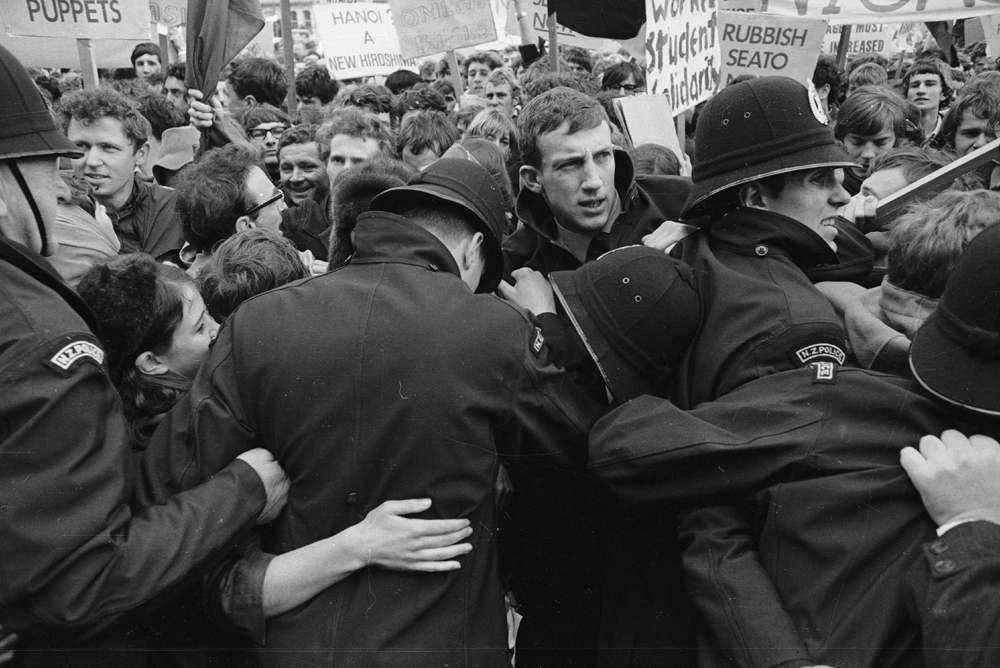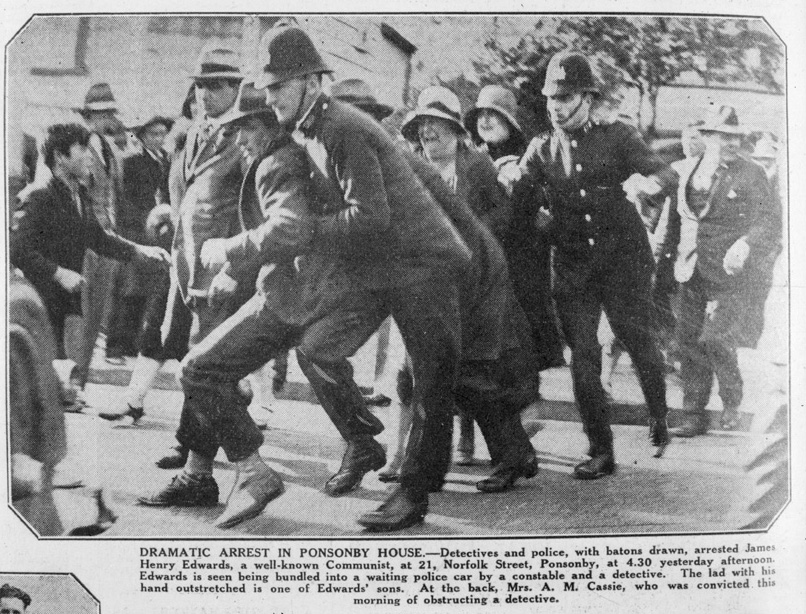It is fifty years since the world was shaken by events of 1968 such as: world-wide student demonstrations; a general strike in France; the Tet Offensive in Vietnam; liberalisation, and its crushing, in Czechoslovakia; the assassination of Martin Luther King and the iconic Black Power salutes by Tommy Smith and John Carlos at the Olympic Games. Against this global context New Zealand history can seem unassuming. But 1968 reverberated here, and the rebellions of that year spurred a decade of resistance: movements of newly-urbanised Māori; the Women’s Liberation Movement; anti-racist campaigning against apartheid; and, energising all of these, the biggest upsurge in strikes in the country’s history.
Protest at Parliament
1968 was a rebellion of young workers. The ‘baby boom’ following WWII meant that in the 1960s many young people were coming into the workplace and chafing against the conservative and restrictive world their parents were used to. Student struggle connected with young workers’ discontent. Protests about racism overseas encouraged Māori to demonstrate against racism here. Energy from one struggle inspired another.
The interaction is best symbolised by a demonstration outside Parliament on 26 June 1968. It had been called by the Wellington District Council of the Federation of Labour, part of a 12-hour strike across the city against the Arbitration Court’s nil-wage order. This economic struggle attracted social protests, as Ken Findlay, president of the Ngauranga Freezing Workers’ Union, explained in a speech to the Victoria University Socialist Club in July 1968:
In April last year a relatively small members’ meeting of the Wellington Committee on Vietnam decided to demonstrate their opposition to the government’s Vietnam policy on the opening day of Parliament. This was in direct response to the […] ban on demonstrations during the Peace, Power and Politics in Asia conference held at the end of March and early April 1968. In May the Maori Organisation on Human Rights likewise decided to demonstrate its opposition to the government’s Maori land policy on the same day […] On Tuesday 25 June the Victoria University Students Association decided to demonstrate its opposition to present government policies on bursaries, the proposed Omega base [a US navy transmitter to submarines], Vietnam, and also to express their support for the workers’ demonstration.
By 1968 there had been eight years of National Party rule. Was the country conservative and apathetic? You could have been forgiven for concluding so after a surface reading, but the 1968 Parliament demonstration showed what was bubbling below the surface. Workers were frustrated with pay freezes and the rising cost of living; Māori were no longer prepared to tolerate racism; New Zealand support for US war in Vietnam was outraging a growing minority. All told about 6,000 people took part in the demonstration. The rally was more than just a demonstration. The energy of the crowd led the Dominion to describe it as a riot, because students and workers stayed protesting after the union leaders had told them to disperse! This may have been bitterness on the media bosses’ part. Strike action by Dominion and Evening Post workers had prevented both titles coming out on the day
What was the rally’s significance? Ken Findlay felt that:
The most important effect of the demonstration was that thousands of workers felt their collective strength […] for the first time in their lives they have felt part of a movement bigger than themselves […] Countless young workers have been bullied […] by the police as well as other agents of the establishment and they have usually been powerless to defend themselves. For the first time in their experience the police were powerless to attack them and the young workers enjoyed the experience immensely. It is the job of university socialists to go to these young workers and explain the relevant of experiences like these to the changes taking place in New Zealand.
Findlay connected class struggle with anti-racism: The Polynesians present at the demonstration also experienced the profound sense of satisfaction of making an effective protest as part of a larger group. The coloured majority of mankind are expressing their independence and humanity all over the world and if you believe that coloured New Zealanders are not affected by this process you are mistaken.
The protest revived a barely-existing revolutionary left. A small group of student radicals would form Red Spark, a magazine arguing Marxist socialism. The story of that journal, and the 1970s left renaissance, will be told in a future Socialist Review.









